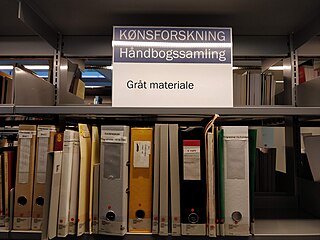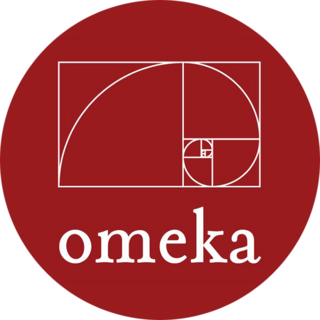Related Research Articles

The Swinburne University of Technology is a public research university in Melbourne, Australia. It is the modern descendant of the Eastern Suburbs Technical College established in 1908, renamed Swinburne Technical College in 1913 after its co-founders George and Ethel Swinburne. It has three campuses in metropolitan Melbourne: Hawthorn, where its main campus is located; Wantirna; and Croydon, as well the Swinburne University of Technology Sarawak Campus in the East Malaysian state of Sarawak. It also offers courses online and through its partnered institutions in Australia and overseas.

Taylor & Francis Group is an international company originating in England that publishes books and academic journals. Its parts include Taylor & Francis, CRC Press, Routledge, F1000 Research and Dovepress. It is a division of Informa plc, a United Kingdom-based publisher and conference company.

Barry Owen Jones,, is an Australian polymath, writer, teacher, lawyer, social activist, quiz champion, and former politician. He campaigned against the death penalty throughout the 1960s, particularly against the execution of Ronald Ryan. He is on the National Trust's list of Australian Living Treasures.

Grey literature is material and research produced by organizations outside of the traditional commercial or academic publishing and distribution channels. Common grey literature publication types include reports, working papers, government documents, white papers and evaluations. Organizations that produce grey literature include government departments and agencies, civil society or non-governmental organizations, academic centres and departments, and private companies and consultants.

The Field Naturalists Club of Victoria (FNCV) is an Australian natural history and conservation organisation. The club is the oldest of its kind in Australia and is unique in having existed continuously since its foundation. Since its founding, the club has drawn its membership from the ranks of both amateur naturalists and professional scientists. This dual stream of members has continued into the 21st century, in which the club is well known for not only its scientific research output, but also numerous ongoing citizen science projects.
Marcia J. Bates is a Professor Emerita of information studies at the UCLA School of Education and Information Studies.

The Biodiversity Heritage Library (BHL) is the world’s largest open-access digital library for biodiversity literature and archives. BHL operates as a worldwide consortium of natural history, botanical, research, and national libraries working together to address this challenge by digitizing the natural history literature held in their collections and making it freely available for open access as part of a global "biodiversity community". The BHL consortium works with the international taxonomic community, publishers, bioinformaticians, and information technology professionals to develop tools and services to facilitate greater access, interoperability, and reuse of content and data. BHL provides a range of services, data exports, and APIs to allow users to download content, harvest source data files, and reuse materials for research purposes. Through taxonomic intelligence tools developed by Global Names Architecture, BHL indexes the taxonomic names throughout the collection, allowing researchers to locate publications about specific taxa. In partnership with the Internet Archive and through local digitization efforts, BHL's portal provides free access to hundreds of thousands of volumes, comprising over 59 million pages, from the 15th–21st centuries.
The Australian Science and Technology Heritage Centre (Austehc), lasted from 1999 to 2006, was a non-profit organisation that received the majority of its funding from collaborative works with the government and industry groups. Austehc was a part of the Department of History and Philosophy of Science at the University of Melbourne. The main purpose and objective of the centre was to help preserve all the historical works relating to Australian science, technology, and medicine. By utilising more advanced technology, all the information within the centre could be easily accessed by anyone.

A smart city is an urban area that uses digital technology to collect data and to operate/provide services. Data can be collected from citizens, devices, buildings, cameras. Applications include traffic and transportation systems, power plants, utilities, urban forestry, water supply networks, waste disposal, criminal investigations, information systems, schools, libraries, hospitals, and other community services. The foundation of a smart city is built on the integration of people, technology, and processes, which connect and interact across sectors such as healthcare, transportation, education, and infrastructure, etc. Smart cities are characterized by the ways in which their local governments monitor, analyze, plan, and govern the city. In a smart city, the sharing of data extends to businesses, citizens and other third parties who can derive benefit from using that data. The three largest sources of spending associated with smart cities as of 2022 were visual surveillance, public transit, and outdoor lighting.

The Syracuse University School of Information Studies, commonly known as the iSchool, is one of the 13 schools and colleges of Syracuse University. It acts as a center for research and education in the policy, systems, service, and technology aspects of information management, information science, and library science. Established in 1896 as the School of Library Science, its name was changed in 1974 to reflect the growing information field. Syracuse University was the first library school to change its name in this way, hence its claim as "the original school for the information age." Starting in the 1970s, the school began to add new programs focused on information studies that aim to merge technology and management skills with an emphasis on human needs and behavior.
Digital history is the use of digital media to further historical analysis, presentation, and research. It is a branch of the digital humanities and an extension of quantitative history, cliometrics, and computing. Digital history is commonly known as digital public history, concerned primarily with engaging online audiences with historical content, or digital research methods, that further academic research. Digital history outputs include: digital archives, online presentations, data visualizations, interactive maps, timelines, audio files, and virtual worlds to make history more accessible to users. Recent digital history projects focus on creativity, collaboration, and technical innovation, text mining, corpus linguistics, network analysis, 3D modeling, and big data analysis. By utilizing these resources, the user can rapidly develop new analyses that can link to, extend, and bring to life existing histories.

Omeka is a free, open-source content management system for online digital collections. As a web application, it allows users to publish and exhibit cultural heritage objects, and extend its functionality with themes and plugins. A lightweight solution in comparison to traditional institutional repository software like DSpace and Fedora, Omeka has a focus on display and uses an unqualified Dublin Core metadata standard.
Philip E. Agre is an American AI researcher and humanities professor, formerly a faculty member at the University of California, Los Angeles. He is known for his critiques of technology. He was successively the publisher of The Network Observer (TNO) and The Red Rock Eater News Service (RRE). TNO ran from January 1994 to July 1996. RRE, an influential mailing list he started in the mid-1990s, ran for around a decade. A mix of news, Internet policy and politics, RRE served as a model for many of today's political blogs and online newsletters.
The Royal Geographical Society of Australasia, formerly the Geographical Society of Australasia, was an Australian organisation formed in 1883 until it split up into various state organisations in the 1920s.
Information technology (IT) is a set of related fields that encompass computer systems, software, programming languages, data and information processing, and storage. IT forms part of information and communications technology (ICT). An information technology system is generally an information system, a communications system, or, more specifically speaking, a computer system — including all hardware, software, and peripheral equipment — operated by a limited group of IT users, and an IT project usually refers to the commissioning and implementation of an IT system. IT systems play a vital role in facilitating efficient data management, enhancing communication networks, and supporting organizational processes across various industries. Successful IT projects require meticulous planning, seamless integration, and ongoing maintenance to ensure optimal functionality and alignment with organizational objectives.
Sarah Colley is an honorary research fellow in the University of Leicester, school of Archaeology and Ancient History. She was elected as a Fellow of the Society of Antiquaries of London in 2011.

Koray Caliskan is a Turkish economic sociologist and organizational designer. He is a tenured professor at Parsons School of Design, The New School, Associate Editor of the Journal of Cultural Economy, the Editor-in-Chief of Journal of Design Strategies. He is the founder of Mamame, a social innovation project bringing together the organizational form of cooperative and limited liability company in economizing under-represented women’s labor, which won the Entrepreneurship of the Year Award in 2017 from Microsoft Turkey. He is the co-founder of The Wrong Department, an international strategic design studio with office in London and New York City. He is married and has two children, living in Brooklyn, New York City.
Kirsten Benkendorff is a marine scientist who works on molluscs, antibiotics, anti-inflammatory properties and cancer fighting properties. She was awarded Young Australian of the Year in 2000 and a Dorothy Hill Medal for Science in 2011.
Lorenzo Veracini is a historian and professor at Swinburne University of Technology’s Institute for Social Research. He is the editor in chief of Settler Colonial Studies and has been a key figure in the development of the field of settler colonialism. His 2010 book Settler Colonialism: A Theoretical Overview was described as "comprehensive though succinct" and "probably the best justification of the imperative to view settler colonialism as significantly different from traditional or classical colonialism".

Bronwyn Fox is an Australian scientist who is professor of materials science and the deputy vice chancellor research and enterprise at the University of New South Wales. She formerly served as the chief scientist at CSIRO. Her research considers carbon fibre and composite materials. She was awarded the 2020 Royal Society of Victoria Medal for Excellence in Scientific Research.
References
- 1 2 "Encyclopedia of Australian Science and Innovation remains important gateway to science archives". Australian Academy of Science.
- ↑ "Encyclopedia of Australian Science". Research Data Australia. Retrieved 2024-12-14.
- ↑ Smith, Ailie; McCarthy, Gavan (2016-07-02). "The Encyclopedia of Australian Science: a virtual meeting of archives and libraries". The Australian Library Journal . 65 (3): 191–202. doi:10.1080/00049670.2016.1212318#abstract. ISSN 0004-9670 – via Taylor & Francis.
- 1 2 Jones, Mike; Piper, Alana (2024-01-02). "Digital History". Australian Historical Studies. 55 (1): 178–203. doi:10.1080/1031461x.2023.2267586#d1e148. ISSN 1031-461X – via Taylor & Francis.
- ↑ "History of Australian Science and Innovation". Swinburne University of Technology . Retrieved 4 December 2024.